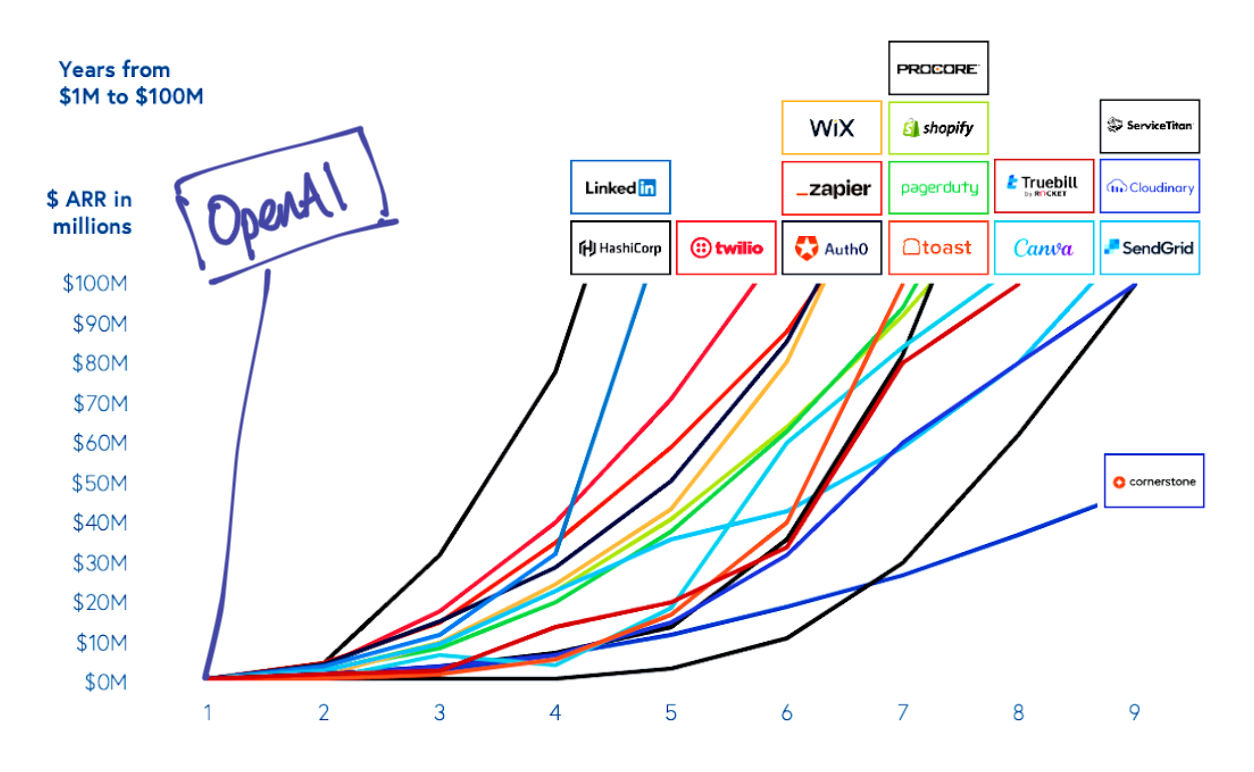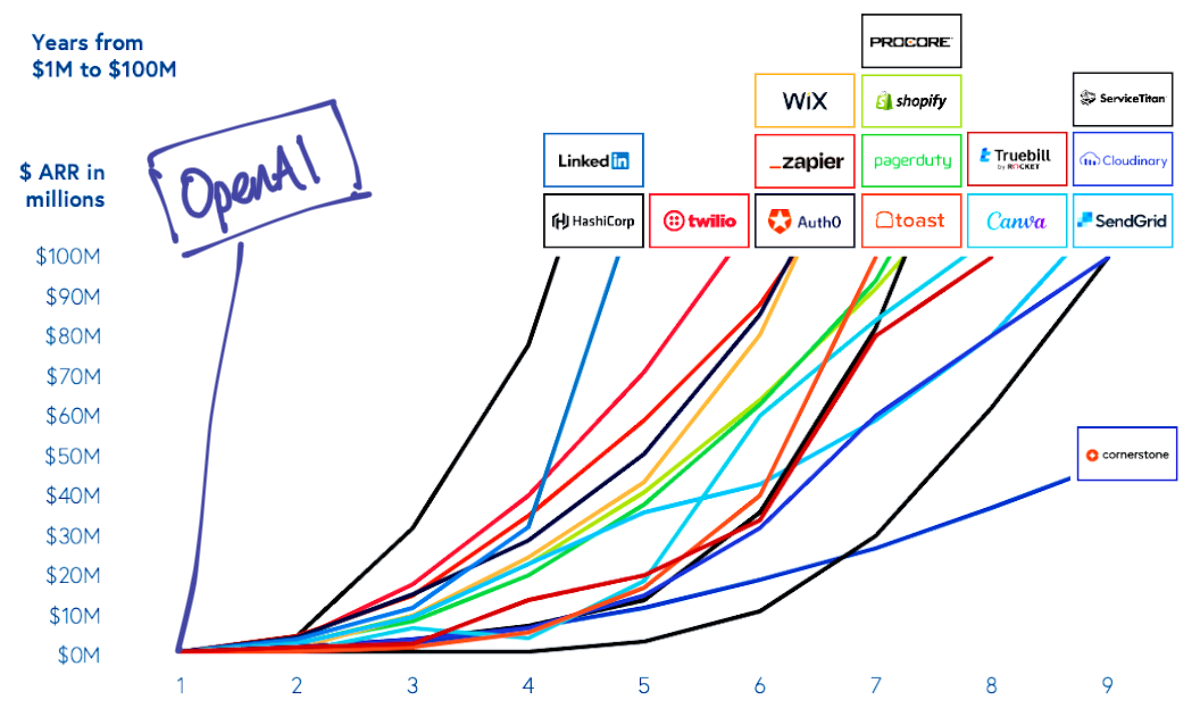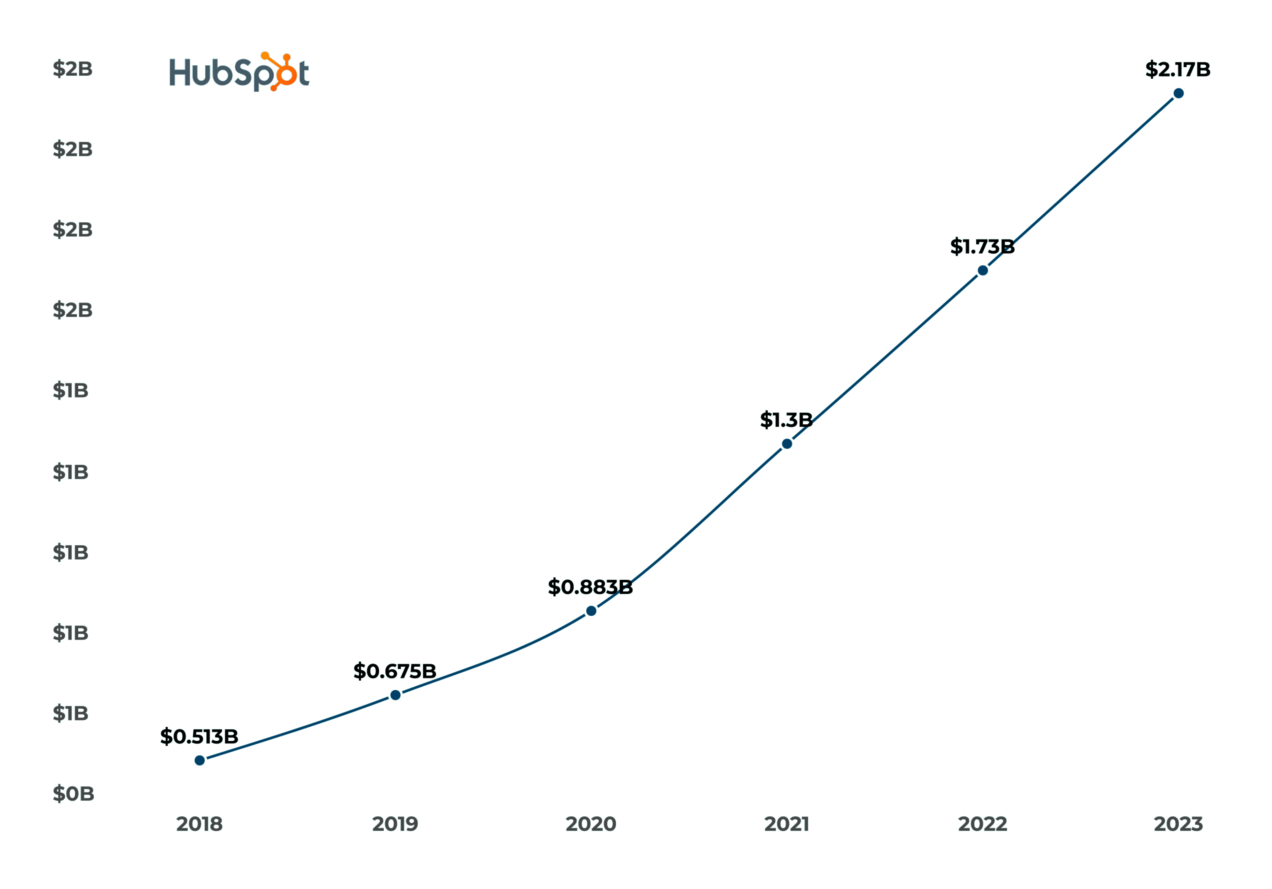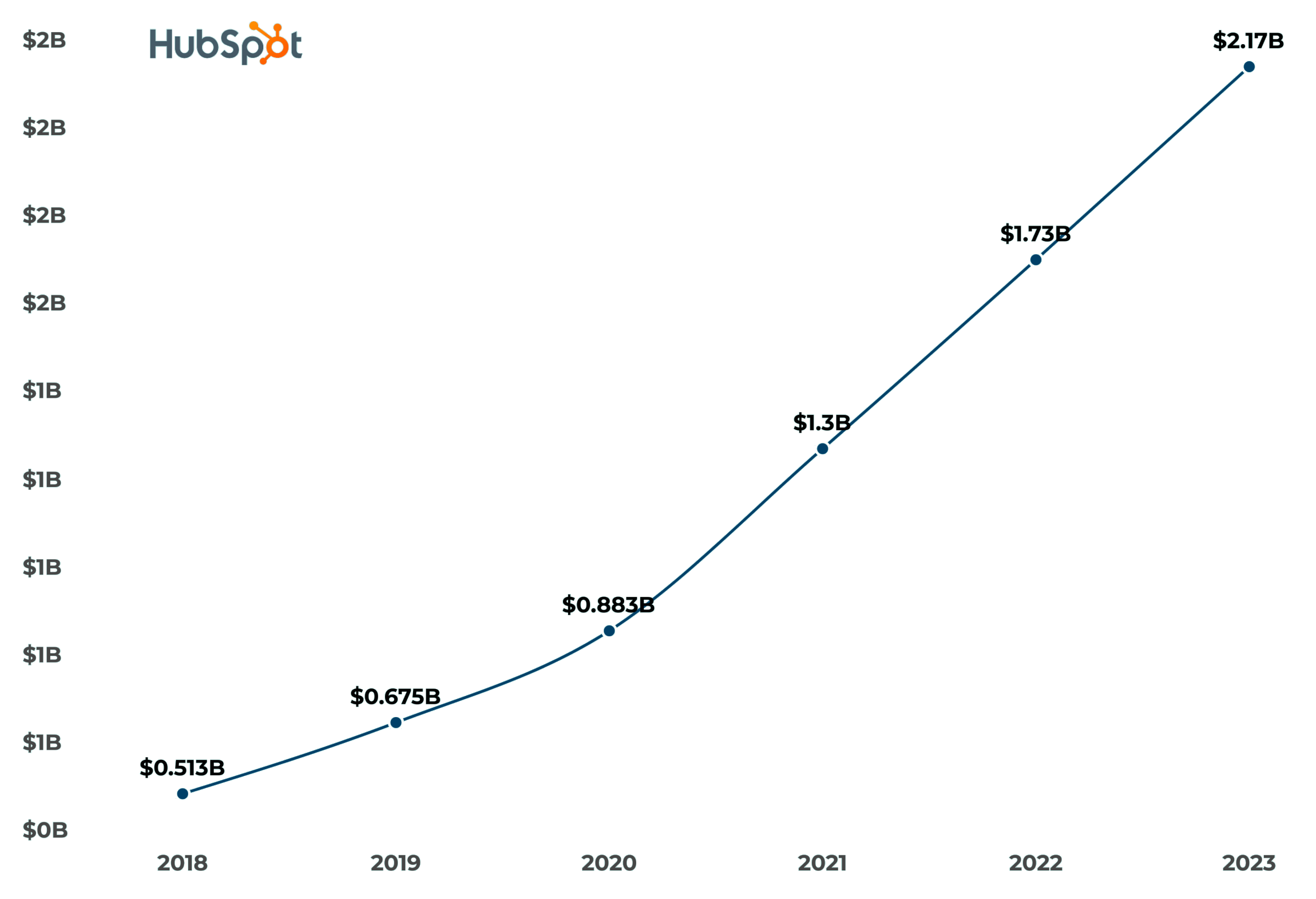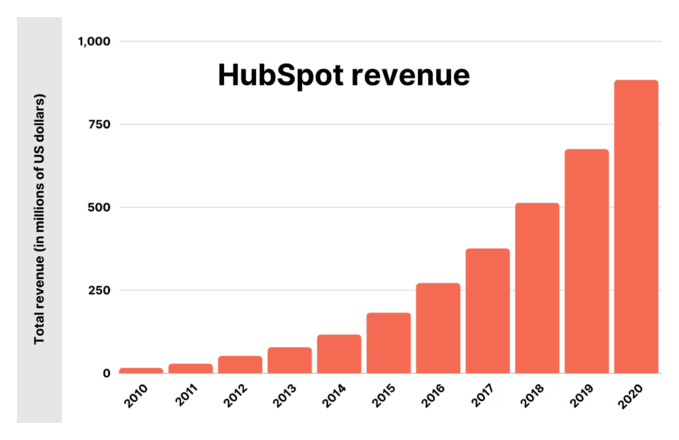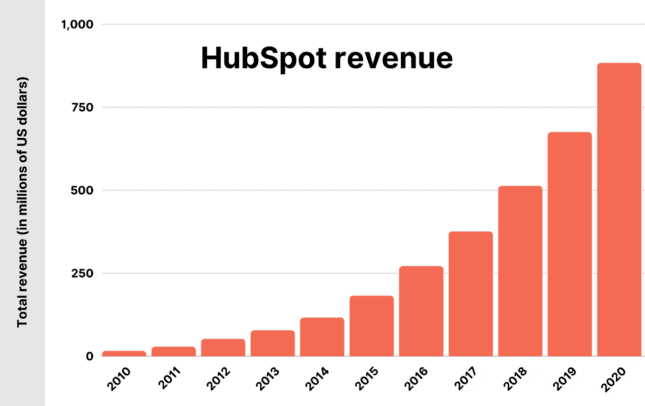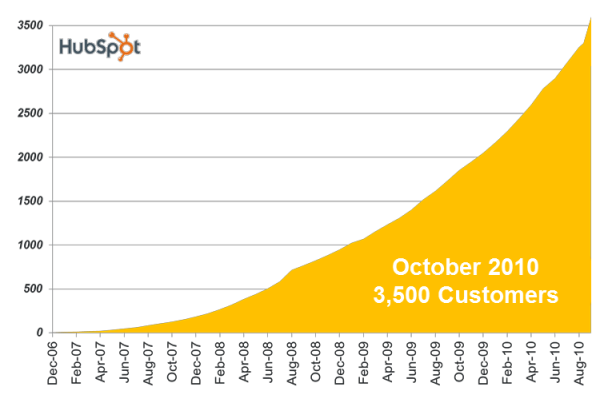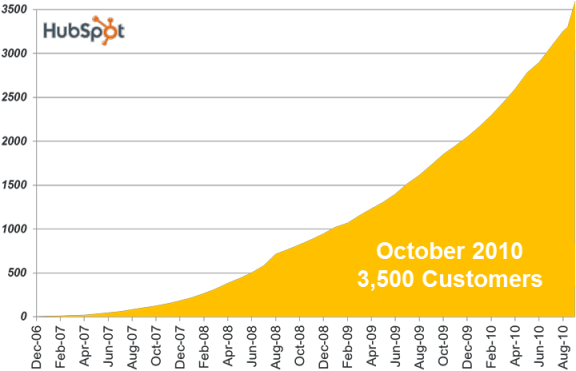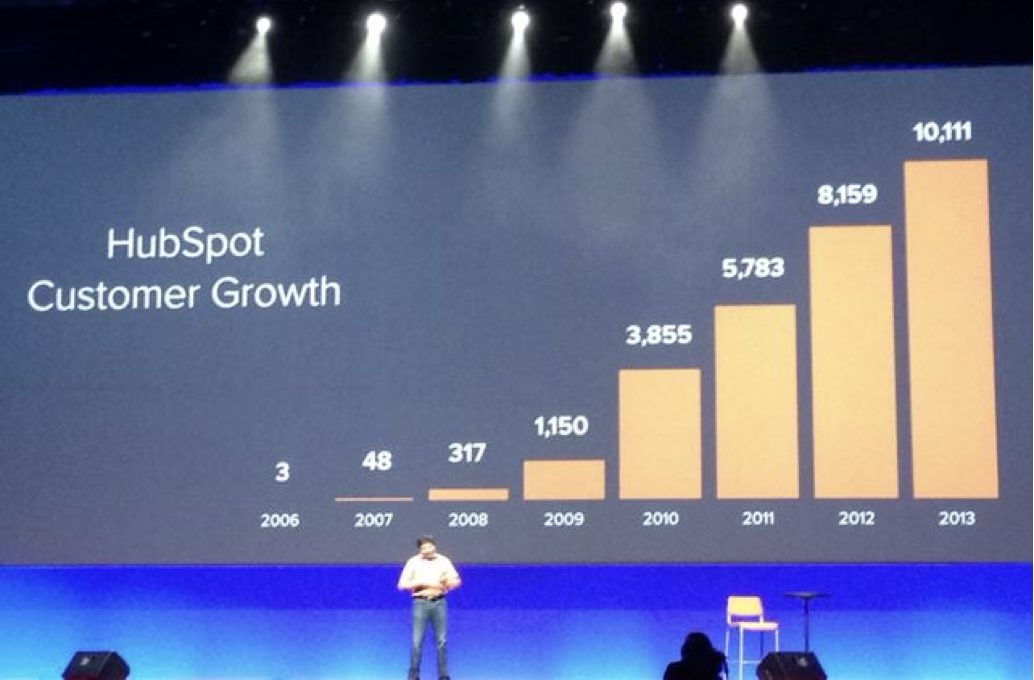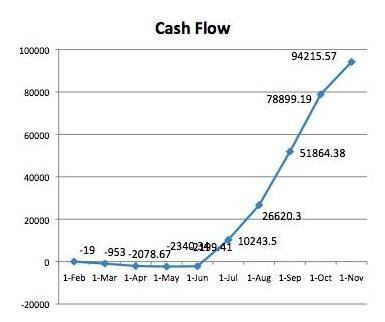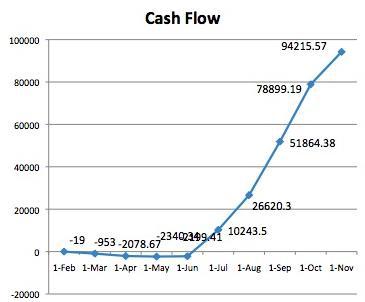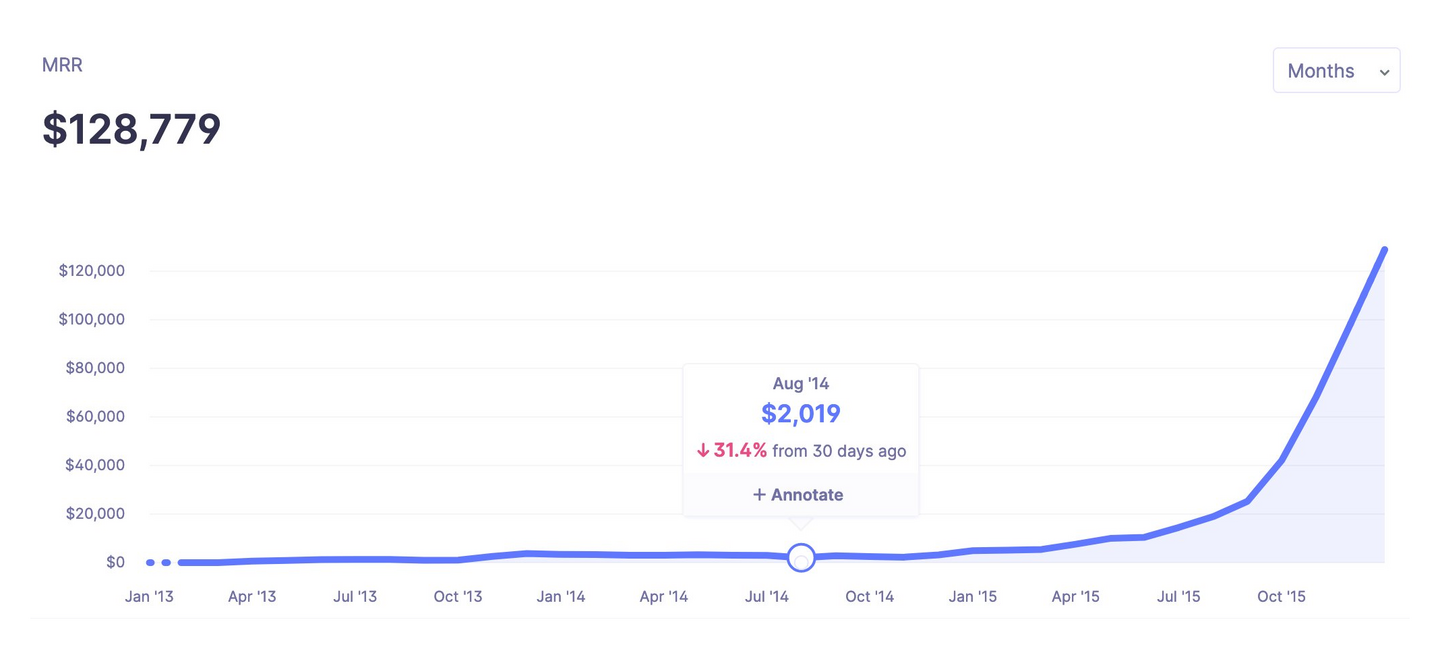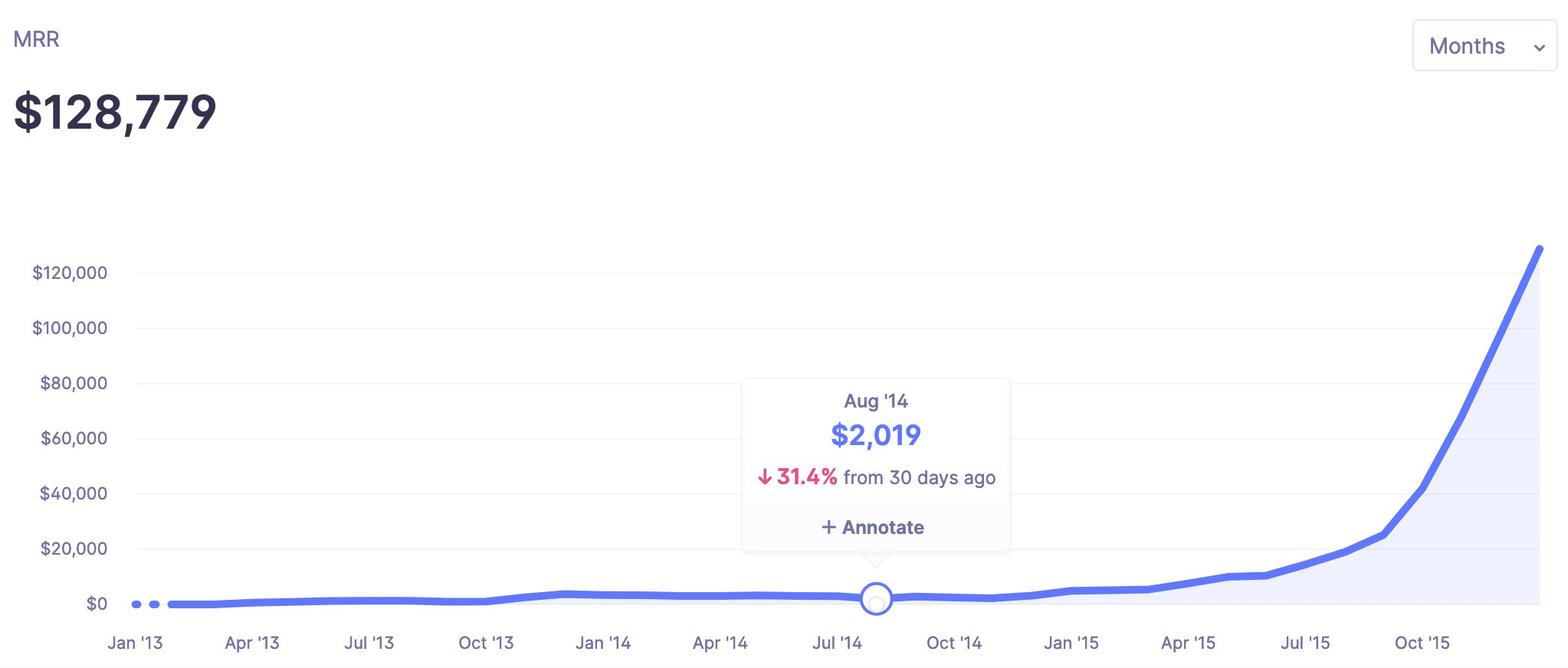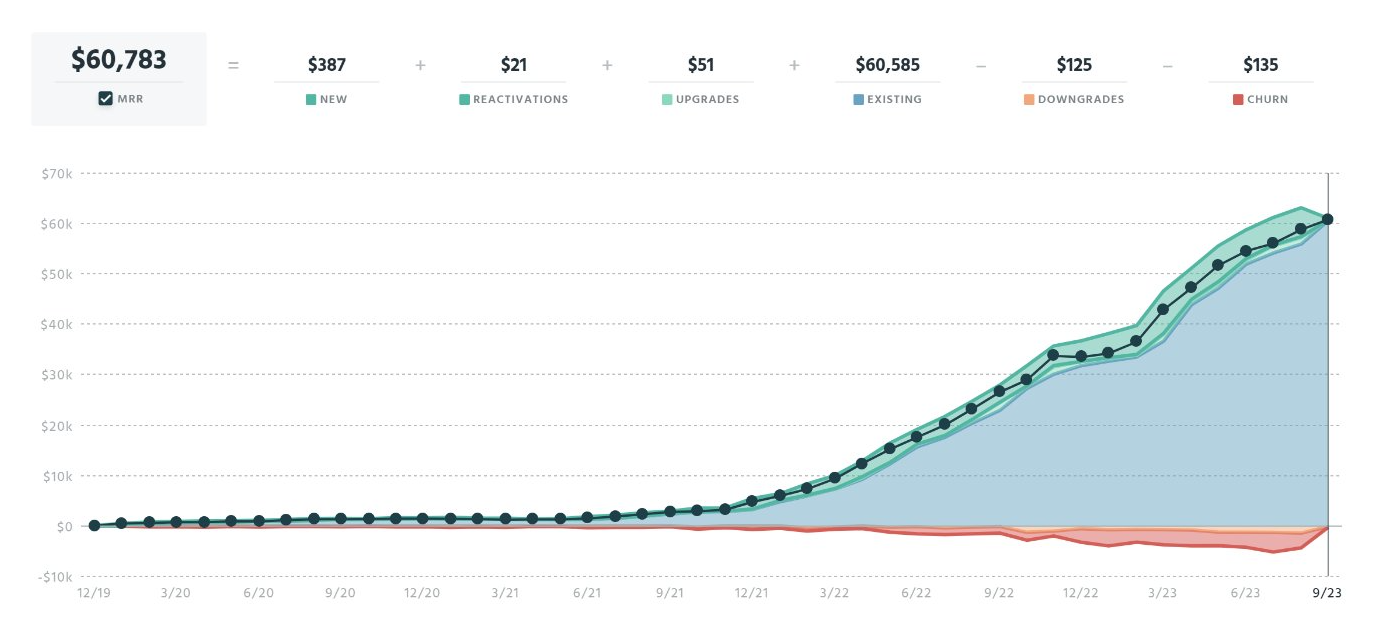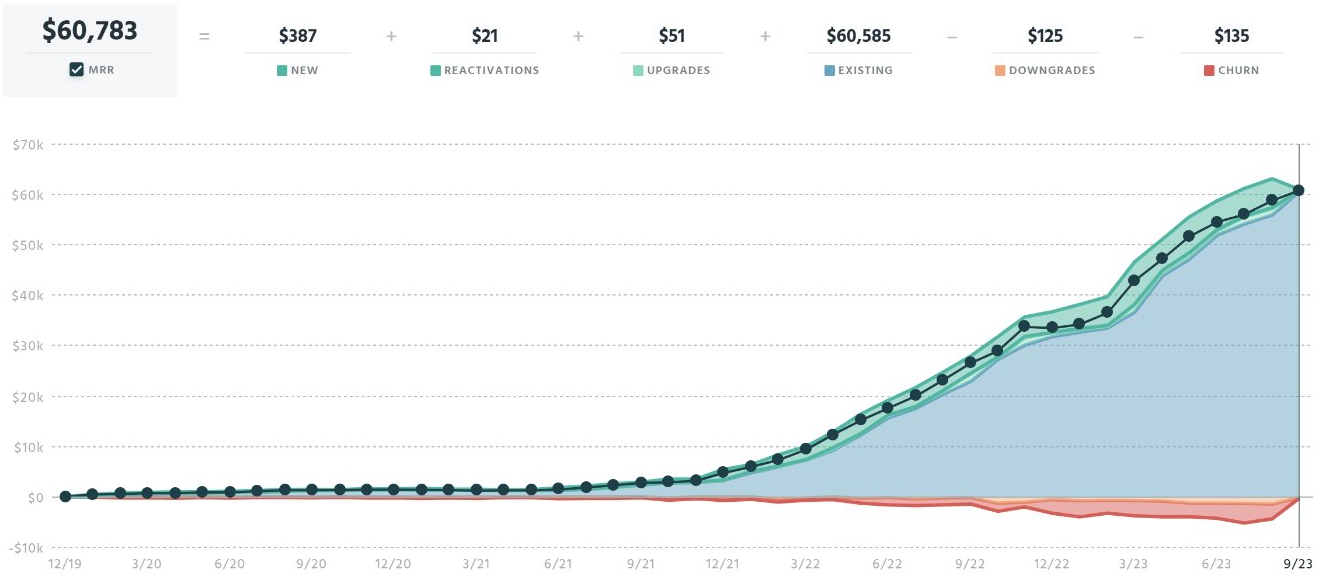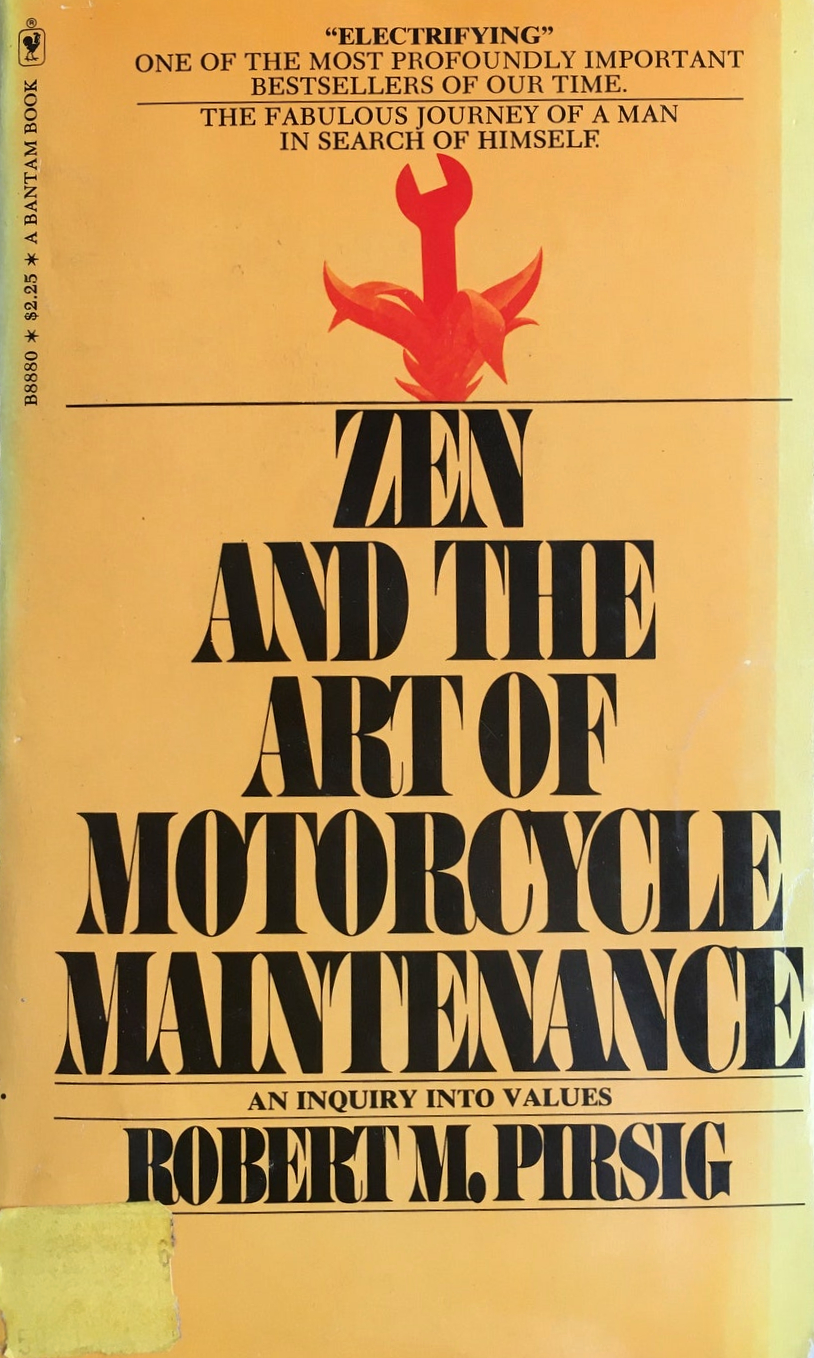It’s a torturous chaos until it isn’t
When you hear “explosive startup growth,” a few darlings come to mind. Facebook, Slack, now OpenAI (Figure 1).
Figure 1: My own startup WP Engine was in the middle of this pack; a good place to be!
I wonder… what did they all look like prior to reaching $1M ARR, i.e. prior to “year 1” on that chart?
HubSpot is a good example, because all their data is public. They are a proper juggernaut of growth; as of the beginning of 2024, at a whopping $2B ARR, they’re still growing quickly:
Figure 2
Shifting eight years earlier, the curve looks similar, just with smaller absolute numbers:
Figure 3
Shifting earlier still, it still looks similar, but now we’ve arrived at the crux of our investigation: The beginning:
Figure 4
Wait, how long did it take them to get their first 500 customers? Two years?
Yes. In fact, after ending 2006 with just 3 (three!) customers, they ended the next year with only 48. That’s less than one per week. For a year.
See, here’s HubSpot co-founder Dharmesh Shah standing in front of that data:
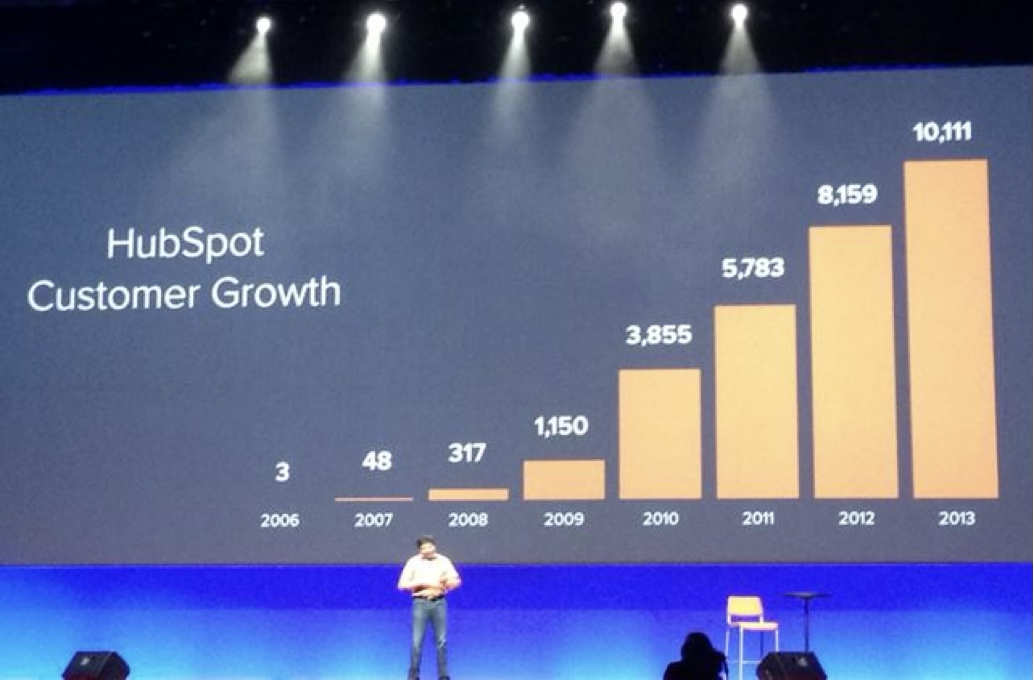
Figure 5: HubSpot’s founder Dharmesh Shah showing their slow linear growth rate for three years, then fast for five.
That does not sound like a juggernaut of growth. In fact, that sounds downright bad. Like, maybe you should shut the company down because it’s “obviously not working.” Or at least, there should be an existential struggle over whether it is wise to continue.
What was going on during those first years? What it was not: an obviously bright future with a clear vision validated by a torrent of customers with open wallets.
So, what was it?
A barely-controlled chaos, awake at 2:43am worrying how to make payroll or whether the numbers will look good enough by next spring to raise another round? Unsure which product features to double-down on and which to kill, worried the wrong choice would tank the entire company? Staying bright and cheery on the outside for the press, customers, investors, and employees while that one horsehair tenuously suspending Damocles’ Sword is looking awfully thin and worn?
Of course it was. It’s always like that.
Then again, the story is the same when the company “runs off a cliff without leaving skid-marks,” never reaching Product/Market Fit; possibly never having extracted a single dime from a single person. The one that really should have shut down.
The same struggle, same uncertainty, same near-impossibility, same mess.
So how do you tell the difference between the tortuous chaos that leads to unimaginable success and that which leads nowhere at all?
I’m not sure you can.
I mean, there are some questions you can ask yourself. But:
Objectively, what’s the difference between Basecamp v1.0 and any number of knock-offs? All of them “the tool we wish we had, so we built it ourselves,” all of them simple, all of them usable by relatively non-technical people, all of them web-based, all of them missing half the features that any one customer wished it had.
Objectively, what’s the difference between StackOverflow and the twenty copycat Q&A websites and thousands of forums? Why was Quora still able to stand out? Could you measure this difference? Could you plot it on a chart?
One thing you know for sure—what doesn’t explain it is a “feature comparison chart.” Or a SWOT. Or financial metrics. Or social media. Or whether they raised money. Or whether they went to Stanford. Or whether the market was already there. Or whether the competition was already there.
Or anything else. Even with my roadmap for Product/Market Fit in hand, there are exceptions to everything. I say in that article that there needs to be founder-fit, but the founders of AirBnB weren’t experienced in hotels or hospitality and the founders of Uber weren’t experienced in car services. And that’s just one assertion among dozens from that one article; there are exceptions to every “rule.”
Take Peldi, founder of Balsamiq Mockups. He blogged a bit, but unlike StackOverflow he didn’t have a head-start with an online presence, and English is his second language. He lives in Italy, not surrounded by an American startup culture. Prior to entrepreneurship he was a lifer at Adobe, so that didn’t prepare him for bootstrapping a company from scratch.
His growth chart in year #1:
Figure 6: Balsamiq Markups revenue, 2008
How do you think Peldi felt during those first six months? Do you think the anguish subsided quickly? Or ever? Do you think Peldi was still sure his ideas and execution were good in June? Or even afterward—this was one-time revenue, not recurring, so it could stop at any time.
Or more recently, Nathan Barry with Convertkit. How did it feel in January 2015, more than two years in and almost nothing to show for it? (Figure 7)
Figure 7: ConvertKit’s early MRR growth
Or more recently still, Tim Bennetto with Pallyy, with two years of making less than $3k/mo in MRR, and then it changed:
Figure 8: Pallyy’s four-year MRR
And it’s not just startups.
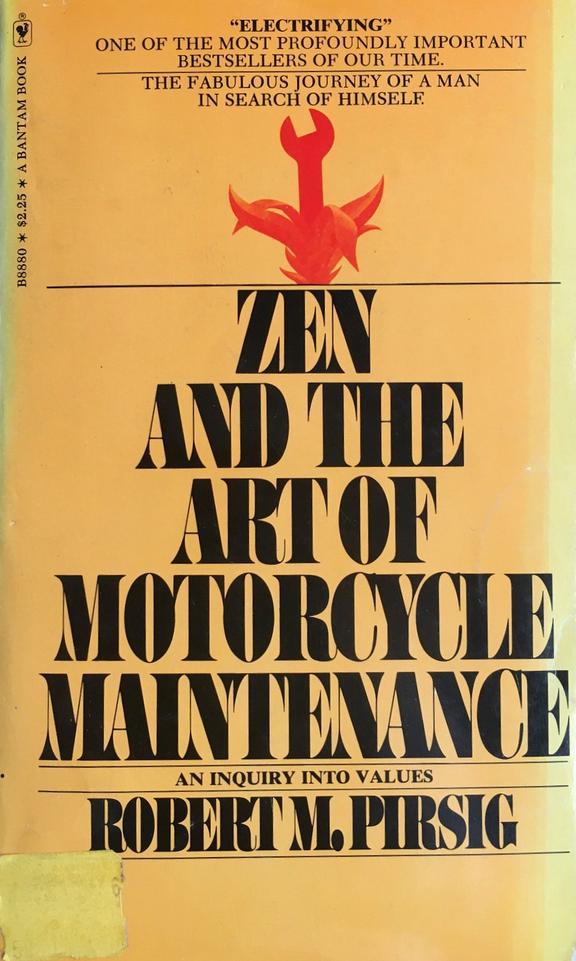
Robert Pirsig’s book Zen and the Art of Motorcycle Maintenance was rejected by 121 publishers. How do you keep going after “just” 100 rejections? After 20, even?
Then it was published by William Morrow & Company in 1974 and stayed on best-seller lists for decades, with total sales of over 5 million copies. For comparison, Dr. Seuss’s Green Eggs and Ham has sold 8 million copies.
Speaking of Dr. Seuss, he was rejected by 27 publishers before Green Eggs was published. Stephen King’s Carrie was rejected 30 times before Doubleday took a chance on it. J.K. Rowling was rejected 12 times. “I was the biggest failure I knew” she said of herself during that time, before she went on to sell 450 million books and be worth over $1B (and became famous for things other than the world of wizards).
I’ve missed more than 9000 shots in my career. I’ve lost almost 300 games. 26 times, I’ve been trusted to take the game-winning shot and missed. I’ve failed over and over and over again in my life. And that is why I succeed.
—Michael Jordan
Of course, your struggles might indeed be in vain. The vast majority of authors never succeed. Nor startups. Nor new product lines inside established companies. Most of the time, it doesn’t work; that’s the brutal truth.
But this I do know:
The fact that you’re in over your head, that you almost cannot will yourself to continue, that you’re completely in the dark, that you’re working yourself to an early grave, that you seem to slide two steps back for every one forward, that nothing’s ever good enough, that your friends and family can’t understand why you’re turning yourself inside out with no apparent progress, that you’re supposed to be enjoying the journey but you’re not, that you yourself doubt whether you’re even capable of this…
These things mean you haven’t yet succeeded, but neither do they prove that you’re failing.
It’s always like this, until it isn’t.
https://longform.asmartbear.com/chaos-at-start/
© 2007-2025 Jason Cohen
 @asmartbear
@asmartbear ePub (Kindle)
ePub (Kindle)
 Printable PDF
Printable PDF
